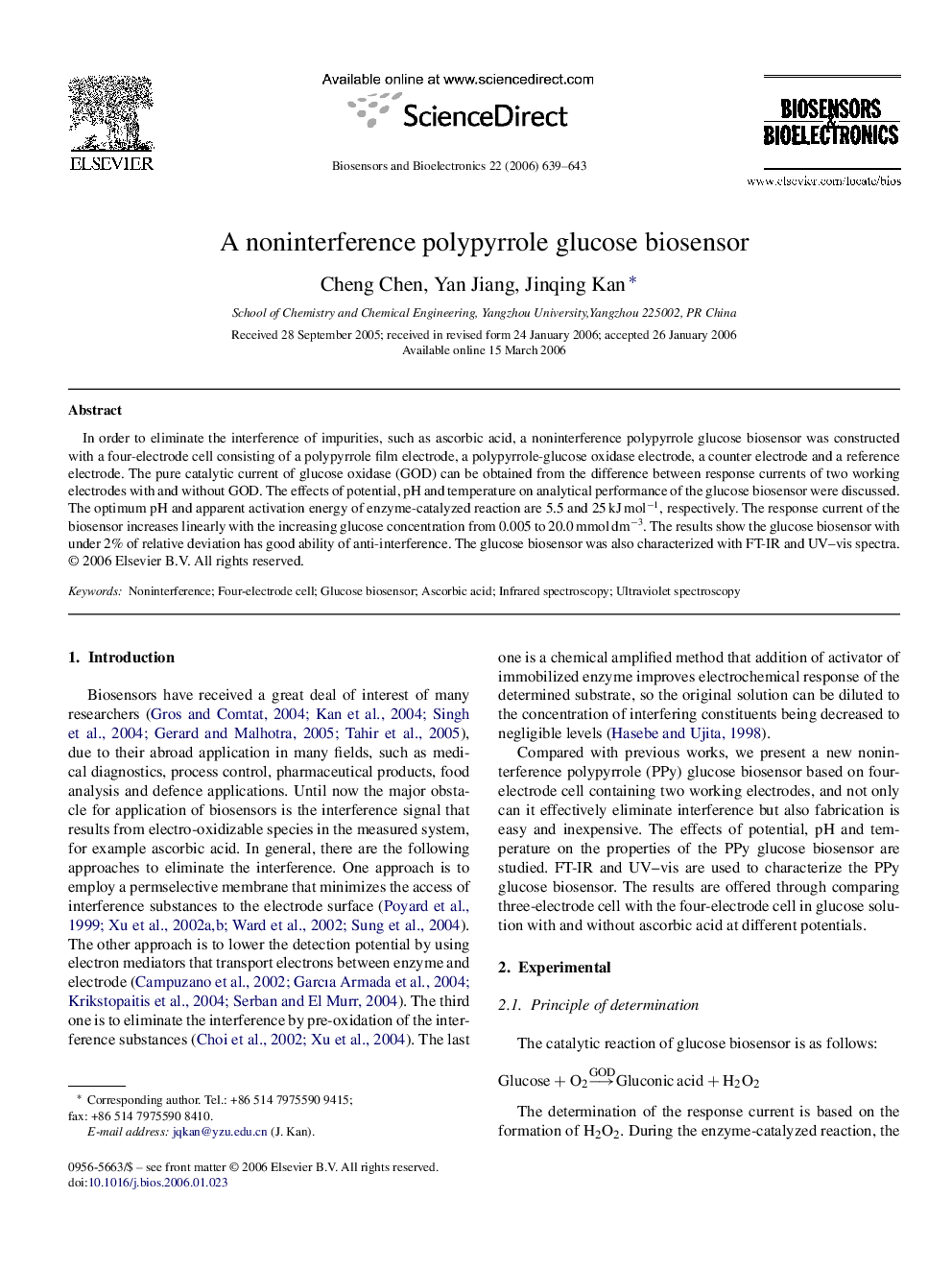| Article ID | Journal | Published Year | Pages | File Type |
|---|---|---|---|---|
| 869485 | Biosensors and Bioelectronics | 2006 | 5 Pages |
In order to eliminate the interference of impurities, such as ascorbic acid, a noninterference polypyrrole glucose biosensor was constructed with a four-electrode cell consisting of a polypyrrole film electrode, a polypyrrole-glucose oxidase electrode, a counter electrode and a reference electrode. The pure catalytic current of glucose oxidase (GOD) can be obtained from the difference between response currents of two working electrodes with and without GOD. The effects of potential, pH and temperature on analytical performance of the glucose biosensor were discussed. The optimum pH and apparent activation energy of enzyme-catalyzed reaction are 5.5 and 25 kJ mol−1, respectively. The response current of the biosensor increases linearly with the increasing glucose concentration from 0.005 to 20.0 mmol dm−3. The results show the glucose biosensor with under 2% of relative deviation has good ability of anti-interference. The glucose biosensor was also characterized with FT-IR and UV–vis spectra.
